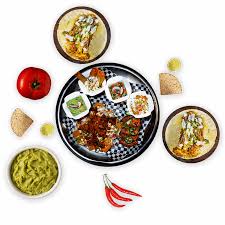Savoring the Essence: A Culinary Journey Through 5 Canadian Food Specialties
Savoring the Essence

Introduction:
Canada is a country known for its amazing scenery and varied cultures. Its rich history and abundant natural resources are reflected in its diversified culinary offerings. Canadian cuisine, which combines local ingredients with foreign influences, produces a distinctive fusion of flavors from the Atlantic provinces to the Pacific coast. We’ll dive into the core of Canadian cuisine in this excursion, highlighting five unique culinary delicacies that capture the spirit of this huge and varied nation.
Poutine: The Irresistible Comfort Food
A discussion on Canadian food would be incomplete without including poutine, a dish that has won over foodies all over the world in addition to becoming a national symbol. Poutine, a dish that originated in Quebec in the late 1950s, is straightforward but incredibly decadent. It is made up of plenty of fresh cheese curds on top of crispy golden fries, covered in a smothering of hot gravy. The end product is a flavorful and harmonic mashup that makes for the ideal comfort food.
Although the precise beginnings of poutine are obscured by culinary history, its appeal has crossed geographical borders. Poutine has become a staple on Canadian restaurants these days, with creative toppings like pulled pork, smoked beef, or even lobster. Poutine’s versatility exemplifies how Canadian food is ever-evolving, with classic recipes giving way to cutting-edge techniques.
Butter Tarts: A Sweet Symphony of Tradition
In particular, butter tarts are a distinctively Canadian treat for sweet tooths. These delicious pastries have a light crust that is stuffed with a gooey combination of eggs, sugar, and butter. Butter tarts, which are frequently garnished with raisins or walnuts, capture the coziness of Canadian hospitality by striking the ideal ratio between sweetness and richness.


With origins in Canada’s pioneer past, butter tarts have grown to be a treasured custom handed down through the ages. These sweet sweets represent the sweetness of Canadian culinary history and bring back fond memories, whether they are cooked from scratch in a family kitchen or fresh from a neighbourhood bakery. Many people have added maple syrup or experimented with other nut pairings, showing how inventive this time-honored treat can be.
Tourtière: A Hearty Slice of French-Canadian Comfort
Tourtière, a savory meat pie that originated in French-speaking Canada, has become a staple of winter comfort food. Tourtière, a traditional Canadian winter dish prepared with minced pig or a mixture of meats (veal, beef, or game) and covered in a light pie crust, epitomizes the heartiness and warmth that are necessary to fend off the chill.
Recipes for tourtière differ from one area and family to the next, each adding an own touch to this well-liked meal. Some add extra taste by adding potatoes or even wild meat, while others use spices like cloves and cinnamon. Tourtière, an emblem of the French-Canadian culinary heritage, is the focal point of holiday feasts and family get-togethers, regardless of the exact recipe.
Nanaimo Bars: Layers of West Coast Sweetness
We come across the delicious Nanaimo bars as we go west; they are named after the British Columbian city of Nanaimo. Three different layers combine to create a symphony of tastes and textures in these no-bake bars. Graham cracker crumbs, chopped almonds, and shredded coconut are combined with a buttery adhesive to form the bottom layer. A smooth and creamy aspect is added by the custard-flavored butter frosting in the center layer. This delicious chocolate coating on top completes this tempting West Coast delight.
Bannock: Indigenous Roots in Canadian Cuisine
This week, we recognize the many ethnic influences that have shaped Canadian culinary identity by focusing on bannock, an Indigenous bread that has become a staple of the country’s cuisine. Originating from Indigenous communities all throughout Canada, bannock is a flexible flatbread composed of basic components including wheat, water, and baking powder.


Conclusion:
To sum up, discovering Canadian food reveals a gastronomic terrain as expansive and heterogeneous as the nation. Bannock, poutine, butter tarts, tourtière, Nanaimo bars, and other delicacies are only a few examples of the diverse range of tastes that characterize Canadian cuisine. Every mouthful reveals a different aspect of Canada’s culinary history and cultural legacy, whether you’re relishing the rich richness of butter tarts, feeling the comforting warmth of a dish of poutine, or discovering the many influences of provincial delicacies.




